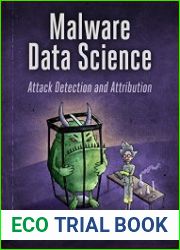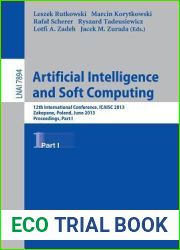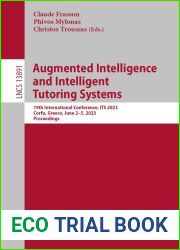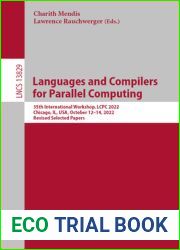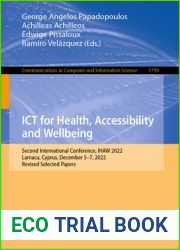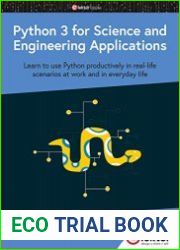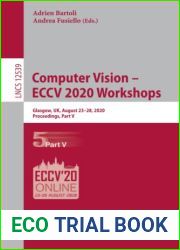
BOOKS - PROGRAMMING - Malware Data Science Attack Detection and Attribution

Malware Data Science Attack Detection and Attribution
Author: Joshua Saxe,Hillary Sanders
Year: 2018
Pages: 272
Format: PDF/AZW3 | EPUB/MOBI
File size: 14.7 MB, 15.6 MB
Language: ENG

Year: 2018
Pages: 272
Format: PDF/AZW3 | EPUB/MOBI
File size: 14.7 MB, 15.6 MB
Language: ENG

The book begins by explaining the basics of malware analysis and why it matters in today's world. It then delves into the details of the attacker's mindset and how they go about their work. This includes understanding their tactics, techniques, and procedures (TTPs) and identifying the tools and infrastructure they use. You will learn how to use machine learning to detect anomalies in network traffic that may indicate malicious activity. Next, we explore various types of malware analysis, including static, dynamic, and behavioral analysis. We also discuss the challenges of analyzing malware in the wild and the limitations of each approach. Finally, we present several case studies demonstrating how data science can be applied to realworld problems in incident response and threat hunting. We conclude with a discussion on the future of malware analysis and how AI and automation are poised to revolutionize this field. The book is intended for cybersecurity professionals who want to improve their skills in detecting and responding to advanced threats. It assumes some familiarity with security concepts but does not require any prior knowledge of machine learning or data science. The book is divided into four parts: Part I provides an overview of malware analysis, including its history, current state, and future trends.
Книга начинается с объяснения основ анализа вредоносных программ и их важности в современном мире. Затем он углубляется в детали мышления злоумышленника и то, как они выполняют свою работу. Это включает в себя понимание их тактики, методов и процедур (TTP) и определение инструментов и инфраструктуры, которые они используют. Вы узнаете, как использовать машинное обучение для обнаружения аномалий в сетевом трафике, которые могут свидетельствовать о вредоносной активности. Далее мы исследуем различные виды анализа вредоносных программ, включая статический, динамический и поведенческий анализ. Мы также обсуждаем проблемы анализа вредоносных программ в дикой природе и ограничения каждого подхода. Наконец, мы представляем несколько тематических исследований, демонстрирующих, как наука о данных может быть применена к проблемам реального мира при реагировании на инциденты и поиске угроз. Мы завершаем дискуссию о будущем анализа вредоносных программ и о том, как ИИ и автоматизация готовы совершить революцию в этой области. Книга предназначена для специалистов в области кибербезопасности, которые хотят улучшить свои навыки обнаружения и реагирования на продвинутые угрозы. Он предполагает некоторое знакомство с концепциями безопасности, но не требует каких-либо предварительных знаний машинного обучения или науки о данных. Книга состоит из четырех частей: в части I представлен обзор анализа вредоносных программ, включая их историю, текущее состояние и будущие тенденции.
livre commence par expliquer les bases de l'analyse des logiciels malveillants et leur importance dans le monde d'aujourd'hui. Puis il approfondit les détails de la pensée de l'intrus et la façon dont ils font leur travail. Il s'agit de comprendre leurs tactiques, leurs méthodes et leurs procédures (TTP) et de déterminer les outils et l'infrastructure qu'ils utilisent. Vous apprendrez comment utiliser l'apprentissage automatique pour détecter les anomalies dans le trafic réseau qui peuvent indiquer une activité malveillante. Ensuite, nous explorons différents types d'analyses de logiciels malveillants, y compris les analyses statiques, dynamiques et comportementales. Nous discutons également des problèmes d'analyse des logiciels malveillants dans la nature et des limites de chaque approche. Enfin, nous présentons plusieurs études de cas démontrant comment la science des données peut être appliquée aux problèmes du monde réel dans la réponse aux incidents et la recherche de menaces. Nous concluons le débat sur l'avenir de l'analyse des logiciels malveillants et sur la façon dont l'IA et l'automatisation sont prêts à révolutionner ce domaine. livre est destiné aux professionnels de la cybersécurité qui souhaitent améliorer leurs compétences en matière de détection et de réponse aux menaces avancées. Il implique une certaine familiarité avec les concepts de sécurité, mais ne nécessite aucune connaissance préalable de l'apprentissage automatique ou de la science des données. livre se compose de quatre parties : la partie I donne un aperçu de l'analyse des logiciels malveillants, y compris leur historique, leur état actuel et les tendances futures.
libro comienza explicando los fundamentos del análisis del malware y su importancia en el mundo actual. Luego profundiza en los detalles del pensamiento del intruso y en la forma en que hacen su trabajo. Esto incluye comprender sus tácticas, métodos y procedimientos (TTP) y determinar las herramientas e infraestructuras que utilizan. Aprenderá a utilizar el aprendizaje automático para detectar anomalías en el tráfico de red que puedan indicar actividad maliciosa. A continuación, investigamos varios tipos de análisis de malware, incluyendo análisis estáticos, dinámicos y de comportamiento. También discutimos los problemas del análisis de malware en estado salvaje y las limitaciones de cada enfoque. Por último, presentamos varios estudios de casos que demuestran cómo la ciencia de los datos se puede aplicar a los problemas del mundo real a la hora de responder a incidentes y buscar amenazas. Concluimos el debate sobre el futuro del análisis de malware y cómo la IA y la automatización están preparadas para revolucionar este campo. libro está dirigido a profesionales de ciberseguridad que quieran mejorar sus habilidades para detectar y responder a amenazas avanzadas. Implica cierta familiaridad con los conceptos de seguridad, pero no requiere ningún conocimiento previo del aprendizaje automático ni de la ciencia de los datos. libro consta de cuatro partes: la parte I ofrece una visión general del análisis del malware, incluyendo su historia, estado actual y tendencias futuras.
O livro começa explicando os fundamentos da análise de malware e sua importância no mundo atual. Então ele se aprofunda nos detalhes do pensamento do intruso e como eles fazem o seu trabalho. Isso inclui a compreensão de suas táticas, métodos e procedimentos (TTP) e a definição das ferramentas e infraestrutura que eles usam. Você vai aprender como usar o treinamento de máquinas para detectar anomalias no tráfego de rede que podem indicar atividade maliciosa. A seguir, pesquisamos vários tipos de análise de malware, incluindo análise estática, dinâmica e comportamental. Também discutimos a análise de malware na vida selvagem e as limitações de cada abordagem. Finalmente, apresentamos vários estudos de caso mostrando como a ciência de dados pode ser aplicada aos problemas do mundo real ao responder a incidentes e encontrar ameaças. Concluímos o debate sobre o futuro da análise de malware e como a IA e a automação estão prontos para revolucionar esta área. O livro é destinado a especialistas em segurança cibernética que querem melhorar suas habilidades de detecção e resposta a ameaças avançadas. Ele sugere alguma familiaridade com os conceitos de segurança, mas não requer qualquer conhecimento prévio de aprendizado de máquina ou ciência de dados. O livro tem quatro partes: a parte I apresenta uma visão geral da análise de malware, incluindo seu histórico, estado atual e tendências futuras.
Il libro inizia spiegando le basi dell'analisi dei malware e la loro importanza nel mondo moderno. Poi si approfondisce nei dettagli del pensiero dell'intruso e il modo in cui svolgono il loro lavoro. Ciò include la comprensione delle loro tattiche, metodi e procedure (TTP) e la definizione degli strumenti e dell'infrastruttura che utilizzano. Scoprirete come usare l'apprendimento automatico per rilevare anomalie nel traffico di rete che potrebbero indicare attività dannosa. In seguito esaminiamo diversi tipi di analisi dei malware, tra cui analisi statiche, dinamiche e comportamentali. Stiamo anche discutendo dei problemi dell'analisi dei malware nella natura e dei limiti di ogni approccio. Infine, presentiamo alcuni studi di caso che dimostrano come la scienza dei dati possa essere applicata ai problemi del mondo reale nella risposta agli incidenti e nella ricerca di minacce. Stiamo per concludere il dibattito sul futuro dell'analisi dei malware e su come l'IA e l'automazione siano pronti a rivoluzionare questo campo. Il libro è rivolto agli esperti di cybersecurity che desiderano migliorare le loro capacità di rilevamento e risposta alle minacce avanzate. Prevede una certa familiarità con i concetti di sicurezza, ma non richiede alcuna conoscenza preliminare dell'apprendimento automatico o della scienza dei dati. Il libro è composto da quattro parti: la parte I fornisce una panoramica dell'analisi dei malware, inclusa la loro storia, lo stato attuale e le tendenze future.
Das Buch beginnt mit einer Erläuterung der Grundlagen der Malware-Analyse und ihrer Bedeutung in der heutigen Welt. Dann geht er in die Details des Denkens des Angreifers und wie sie ihre Arbeit machen. Dies beinhaltet das Verständnis ihrer Taktiken, Techniken und Verfahren (TTP) und die Identifizierung der Werkzeuge und der Infrastruktur, die sie verwenden. e erfahren, wie e maschinelles rnen verwenden, um Anomalien im Netzwerkverkehr zu erkennen, die auf schädliche Aktivitäten hinweisen können. Als nächstes untersuchen wir verschiedene Arten von Malware-Analysen, einschließlich statischer, dynamischer und verhaltensbezogener Analysen. Wir diskutieren auch die Herausforderungen der Malware-Analyse in freier Wildbahn und die Grenzen jedes Ansatzes. Schließlich präsentieren wir mehrere Fallstudien, die zeigen, wie Data Science bei der Reaktion auf Vorfälle und der Suche nach Bedrohungen auf reale Probleme angewendet werden kann. Wir beenden die Diskussion über die Zukunft der Malware-Analyse und wie KI und Automatisierung bereit sind, diesen Bereich zu revolutionieren. Das Buch richtet sich an Cybersicherheitsexperten, die ihre Fähigkeiten zur Erkennung und Reaktion auf fortgeschrittene Bedrohungen verbessern möchten. Es beinhaltet eine gewisse Vertrautheit mit cherheitskonzepten, erfordert jedoch keine Vorkenntnisse in maschinellem rnen oder Datenwissenschaft. Das Buch besteht aus vier Teilen: Teil I bietet einen Überblick über die Analyse von Malware, einschließlich ihrer Geschichte, ihres aktuellen Status und zukünftiger Trends.
''
Kitap, kötü amaçlı yazılım analizinin temellerini ve modern dünyadaki önemini açıklayarak başlıyor. Daha sonra saldırganın düşüncesinin ayrıntılarına ve işlerini nasıl yaptıklarına bakar. Bu, taktiklerini, yöntemlerini ve prosedürlerini (TTP) anlamayı ve kullandıkları araçları ve altyapıyı tanımlamayı içerir. Ağ trafiğindeki kötü amaçlı etkinliği gösterebilecek anormallikleri tespit etmek için makine öğrenimini nasıl kullanacağınızı öğreneceksiniz. Daha sonra, statik, dinamik ve davranışsal analiz dahil olmak üzere çeşitli kötü amaçlı yazılım analizlerini araştırıyoruz. Ayrıca, kötü amaçlı yazılımları vahşi ortamda analiz etmenin zorluklarını ve her bir yaklaşımın sınırlamalarını tartışıyoruz. Son olarak, veri biliminin olay yanıtı ve tehdit avında gerçek dünyadaki sorunlara nasıl uygulanabileceğini gösteren birkaç vaka çalışması sunuyoruz. Kötü amaçlı yazılım analizinin geleceği ve AI ve otomasyonun bu alanda nasıl devrim yaratmaya hazır olduğu konusundaki tartışmayı sonuçlandırıyoruz. Kitap, gelişmiş tehditleri tespit etme ve bunlara yanıt verme becerilerini geliştirmek isteyen siber güvenlik uzmanlarına yöneliktir. Güvenlik kavramlarına biraz aşina olduğunu varsayar, ancak makine öğrenimi veya veri bilimi hakkında önceden bilgi gerektirmez. Kitap dört bölümden oluşuyor: Bölüm I, geçmişleri, mevcut durumları ve gelecekteki eğilimleri de dahil olmak üzere kötü amaçlı yazılım analizine genel bir bakış sunuyor.
يبدأ الكتاب بشرح أساسيات تحليل البرامج الضارة وأهميتها في العالم الحديث. ثم يتعمق في تفاصيل تفكير المهاجم وكيف يقومون بعملهم. وهذا يشمل فهم تكتيكاتها وأساليبها وإجراءاتها (TTP) وتحديد الأدوات والبنية التحتية التي تستخدمها. ستتعلم كيفية استخدام التعلم الآلي لاكتشاف الحالات الشاذة في حركة مرور الشبكة التي قد تشير إلى نشاط ضار. بعد ذلك، نستكشف أنواعًا مختلفة من تحليل البرامج الضارة، بما في ذلك التحليل الثابت والديناميكي والسلوكي. نناقش أيضًا تحديات تحليل البرامج الضارة في البرية وقيود كل نهج. أخيرًا، نقدم العديد من دراسات الحالة التي توضح كيف يمكن تطبيق علم البيانات على مشكلات العالم الحقيقي في الاستجابة للحوادث وصيد التهديدات. نختتم المناقشة حول مستقبل تحليل البرامج الضارة وكيف يستعد الذكاء الاصطناعي والأتمتة لإحداث ثورة في هذا المجال. يستهدف الكتاب المتخصصين في الأمن السيبراني الذين يرغبون في تحسين مهاراتهم في اكتشاف التهديدات المتقدمة والاستجابة لها. يفترض بعض الإلمام بمفاهيم الأمان، لكنه لا يتطلب أي معرفة مسبقة بالتعلم الآلي أو علم البيانات. يتكون الكتاب من أربعة أجزاء: يقدم الجزء الأول لمحة عامة عن تحليل البرامج الضارة، بما في ذلك تاريخها ووضعها الحالي واتجاهاتها المستقبلية.







